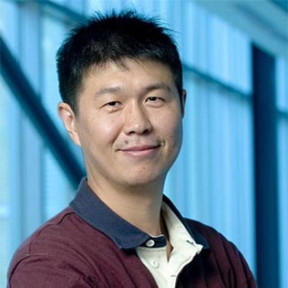Home > Press > Chloride ions from seawater eyed as possible lithium replacement in batteries of the future
 |
| Xiaowei Teng
|
Abstract:
Sodium, Potassium and zinc have all been promising contenders for lithiums place in rechargeable batteries of the future, but researchers at Worcester Polytechnic Institute (WPI) have added an unusual and more abundant competitor to the mix: chloride, the richest negatively charged ions in seawater.
Chloride ions from seawater eyed as possible lithium replacement in batteries of the future
Worcester, MA | Posted on August 11th, 2023
Xiaowei Teng, the James H. Manning professor of Chemical Engineering at WPI, has discovered a new redox chemistry empowered by chloride ions for the development of seawater green batteries.
Modern lithium-ion batteries used in various applications, including electric vehicles, can be problematic for grid storage, given their high cost and reliance on critical materials, such as cobalt, nickel, and lithium, as well as their limited geographical availability. For example, six countries own over 85% of lithium reserves on the land.
Teng and his research collaborators–Heath Turner, professor of Chemical and Biological Engineering at the University of Alabama, and Lihua Zhang, Milinda Abeykoon, Gihan Kwon, Daniel Olds, all research scientists at Brookhaven National Laboratory in New York–went beyond the limits of current green battery technology by leveraging chloride ions to empower redox chemistry of iron oxide battery materials.
Teng and his colleagues reported on the new battery chemistry in Chloride-Insertion Enhances the Electrochemical Oxidation of Iron Hydroxide Double Layer Hydroxide into Oxyhydroxide in Alkaline Iron Batteries, a paper published in the American Chemical Society journal Chemistry of Materials and highlighted in the supplementary front cover.
This study revealed that chloride ion insertion into Fe(OH)2 layered double hydroxide formed a Green Rust intermediate crystalline material, which assisted a one-charge transfer Fe(OH)2/FeOOH conversion reaction and improved cycling stability. This new iron redox chemistry was discovered and examined in the WPI lab. Teng and his graduate student Sathya Narayanan Jagadeesan, who is the leading author of the article, further traveled to Department of Energy User Facilities at Brookhaven National Laboratory to conduct experiments to validate the results using operandosynchrotron X-ray diffraction and high-resolution elementary mapping.
Teng and his WPI team made an aqueous battery, a small lab-scale prototype that operated in the water-based electrolyte, using electrodes made mostly from abundant elements such as iron oxides and hydroxides. While the team hasnt calculated the cost, the use of earth-abundant materials should tip the scale in their favor, Teng says. The U.S. produces over 15 million tons of scrap iron wastes that are not recycled each year, many of which exist in the form of rust. Therefore, the reported rechargeable alkaline iron battery chemistry helps repurpose the iron rust waste materials for modern energy storage.
The research was funded by the National Science Foundation and the Department of Energy (DOE).
####
For more information, please click here
Contacts:
Steven Foskett
Worcester Polytechnic Institute
Cell: 5088689413
Copyright © Worcester Polytechnic Institute
If you have a comment, please Contact us.
Issuers of news releases, not 7th Wave, Inc. or Nanotechnology Now, are solely responsible for the accuracy of the content.
News and information
![]()
Femtosecond laser technique births “dancing microrobots”: USTC’s breakthrough in multi-material microfabrication August 11th, 2023
![]()
USTC achieved dynamic imaging of interfacial electrochemistry August 11th, 2023
![]()
Simple ballpoint pen can write custom LEDs August 11th, 2023
Govt.-Legislation/Regulation/Funding/Policy
![]()
Tattoo technique transfers gold nanopatterns onto live cells August 11th, 2023
![]()
The present and future of computing get a boost from new research July 21st, 2023
Possible Futures
![]()
USTC achieved dynamic imaging of interfacial electrochemistry August 11th, 2023
![]()
Simple ballpoint pen can write custom LEDs August 11th, 2023
![]()
Tattoo technique transfers gold nanopatterns onto live cells August 11th, 2023
Discoveries
![]()
Simple ballpoint pen can write custom LEDs August 11th, 2023
![]()
Tattoo technique transfers gold nanopatterns onto live cells August 11th, 2023
Announcements
![]()
Simple ballpoint pen can write custom LEDs August 11th, 2023
![]()
Tattoo technique transfers gold nanopatterns onto live cells August 11th, 2023
Interviews/Book Reviews/Essays/Reports/Podcasts/Journals/White papers/Posters
![]()
Simple ballpoint pen can write custom LEDs August 11th, 2023
![]()
Tattoo technique transfers gold nanopatterns onto live cells August 11th, 2023
Battery Technology/Capacitors/Generators/Piezoelectrics/Thermoelectrics/Energy storage
![]()
Graphene-based Carbocatalysts: Synthesis, Properties, and ApplicationsBeyond Boundaries June 9th, 2023
![]()
Channeling mechanical energy in a preferred direction April 14th, 2023
![]()
Bilayer PET/PVDF substrate-reinforced solid polymer electrolyte improves solid-state lithium metal battery performance March 24th, 2023
![]()
Make them thin enough, and antiferroelectric materials become ferroelectric February 10th, 2023










